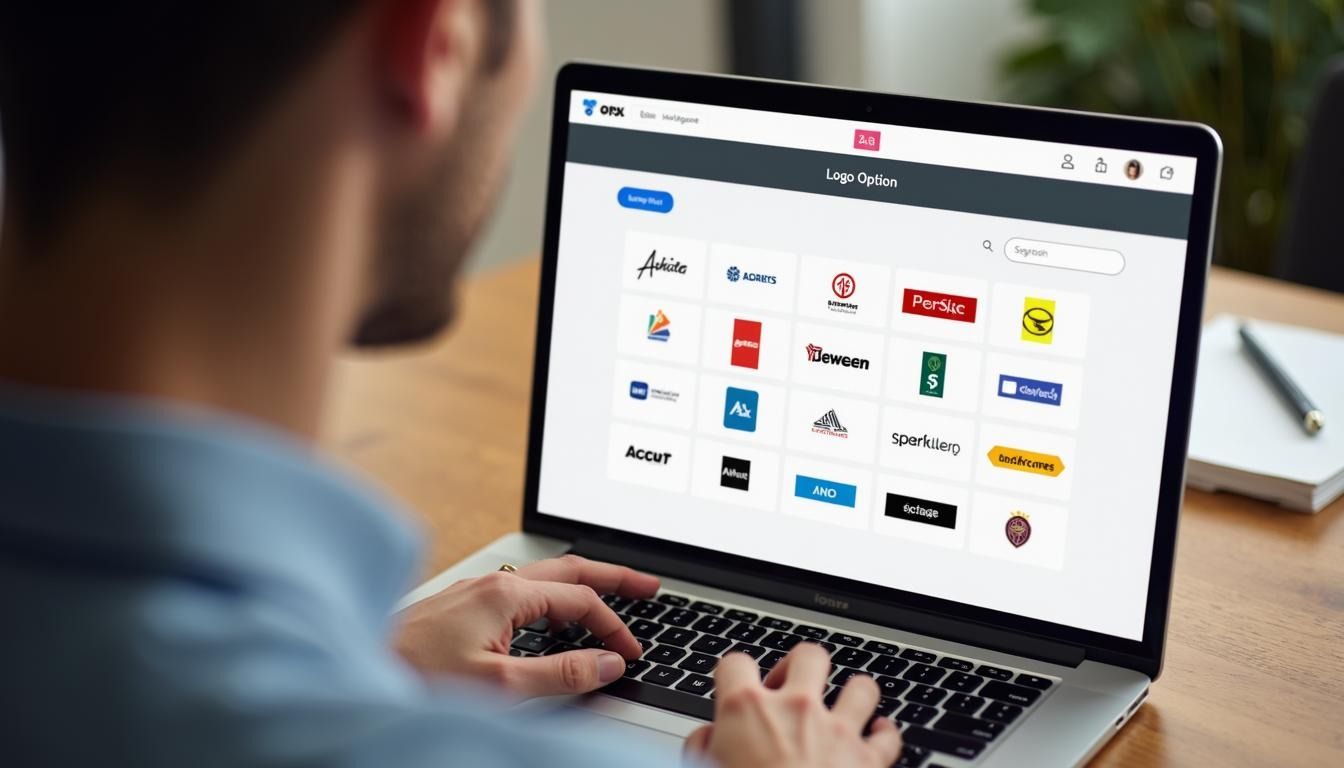

AI logo design is revolutionizing brand identity creation, making it faster and more accessible than ever. Let’s learn more about this topic below with Bottle Flip, exploring how artificial intelligence is transforming the way businesses establish their visual presence.
Artificial intelligence has made significant strides in various creative fields, and logo design is no exception. The integration of AI into the design process has opened up new possibilities for businesses and individuals looking to create a unique brand identity quickly and efficiently. This technology has democratized logo creation, allowing even those without extensive design experience to produce professional-looking logos in a matter of minutes.
One of the key advantages of AI-powered logo design is its ability to analyze vast amounts of data and generate countless design variations based on user input. This process, which would typically take human designers hours or even days, can be accomplished in mere seconds by AI algorithms. The result is a diverse range of logo options that can be further customized to suit the specific needs and preferences of the brand.
As we delve deeper into the world of AI logo design, it’s important to consider how this technology is impacting the creative industry as a whole. While some may argue that AI threatens to replace human designers, many experts believe that it will instead augment their capabilities, allowing them to focus on higher-level creative tasks and strategic thinking. The Bottle Flip phenomenon, which gained popularity as a simple yet addictive game, serves as a reminder that sometimes the most impactful ideas can come from unexpected places – much like the innovative designs that AI can generate.
To understand the power of AI in logo design, it’s essential to explore the underlying mechanisms that drive this technology. At its core, AI logo design relies on machine learning algorithms that have been trained on vast datasets of existing logos, design principles, and visual elements. These algorithms use this knowledge to generate new, unique designs based on user input and preferences.
The process typically begins with the user providing basic information about their brand, such as the company name, industry, and desired style. Some AI logo design tools may also ask for color preferences or specific imagery to incorporate. The AI then processes this information and generates a selection of logo concepts for the user to choose from.
One of the most impressive aspects of AI logo design is its ability to learn and improve over time. As more users interact with the system and provide feedback on the generated logos, the AI refines its understanding of what makes a successful design. This continuous learning process ensures that the quality of AI-generated logos steadily improves, potentially rivaling the work of human designers in terms of creativity and effectiveness.
The Bottle Flip game, which requires players to flip a partially filled water bottle and land it upright, demonstrates how simple concepts can captivate audiences. Similarly, AI logo design tools aim to simplify the complex process of creating a brand identity, making it accessible and engaging for users of all skill levels.
While AI can generate impressive initial concepts, the human touch is still crucial in refining and personalizing the final logo design. Most AI logo design platforms offer customization options that allow users to adjust various elements of the generated logos, such as colors, fonts, layouts, and iconography. This level of control ensures that the final product accurately represents the brand’s vision and values.
The customization process often involves intuitive drag-and-drop interfaces or simple sliders that make it easy for users to experiment with different design variations. Some advanced AI logo design tools even use natural language processing to understand and implement more complex design requests, further bridging the gap between human creativity and machine-generated concepts.
As users refine their logos, the AI can provide real-time feedback and suggestions based on design principles and best practices. This guidance can be particularly valuable for those who may not have a strong background in graphic design, helping them create more balanced and visually appealing logos. The iterative nature of this process mirrors the trial-and-error approach often seen in games like Bottle Flip, where players continuously adjust their technique to achieve the desired outcome.
The adoption of AI in logo design offers numerous advantages for businesses and individuals looking to establish a strong brand identity. One of the most significant benefits is the speed at which high-quality logos can be created. Traditional logo design processes often involve multiple rounds of brainstorming, sketching, and revisions, which can take weeks or even months to complete. With AI, initial concepts can be generated in minutes, dramatically reducing the time-to-market for new brands or rebranding efforts.
Cost-effectiveness is another major advantage of AI logo design. Professional logo design services can be expensive, especially for small businesses or startups with limited budgets. AI-powered tools often provide a more affordable alternative, offering high-quality results at a fraction of the cost of traditional design services. This democratization of design allows more businesses to invest in creating a strong visual identity, regardless of their financial resources.
The versatility of AI logo design is also worth noting. These tools can generate logos suitable for a wide range of industries and styles, from minimalist and modern to complex and traditional. This flexibility ensures that businesses can find a design that aligns with their brand personality and target audience. Much like how the Bottle Flip game appealed to a diverse audience with its simple yet challenging premise, AI logo design tools cater to a broad spectrum of users with varying design needs and preferences.
AI logo design tools excel at creating consistent brand identities that can be easily scaled across various applications. Once a logo is generated and refined, these platforms often provide a comprehensive brand kit that includes different versions of the logo optimized for various use cases, such as social media profiles, websites, print materials, and merchandise. This consistency helps businesses maintain a cohesive brand image across all touchpoints, reinforcing brand recognition and recall.
The scalability of AI-generated logos is particularly beneficial for businesses with plans for growth and expansion. As companies evolve and enter new markets, their logo may need to be adapted or localized for different cultures and languages. AI logo design tools can quickly generate variations of the original logo that maintain the core brand identity while accommodating these new requirements. This adaptability ensures that the brand remains relevant and impactful as it grows, much like how the Bottle Flip trend quickly spread and adapted to different contexts worldwide.
While AI logo design offers numerous benefits, it’s important to acknowledge its limitations and potential challenges. One of the primary concerns is the risk of creating generic or overly similar logos. As AI algorithms draw from existing design databases, there’s a possibility that the generated logos may lack true originality or fail to capture the unique essence of a brand. This limitation underscores the importance of human involvement in the design process to ensure that the final logo truly represents the brand’s identity and values.
Another challenge is the potential loss of the human touch in design. While AI can generate aesthetically pleasing logos, it may struggle to incorporate the nuanced emotional and cultural considerations that human designers naturally bring to their work. This limitation can be particularly problematic for brands targeting specific cultural markets or aiming to evoke particular emotional responses through their logo.
The reliance on AI for logo design also raises questions about the future of the graphic design industry. As these tools become more sophisticated, there are concerns about job displacement for human designers. However, many experts argue that AI will likely complement rather than replace human designers, shifting their focus to more strategic and conceptual aspects of brand identity development.
It’s worth noting that the simplicity and accessibility of AI logo design tools, much like the Bottle Flip game, can lead to oversaturation in the market. As more businesses adopt these tools, there’s a risk of visual homogeneity in brand identities, potentially making it harder for companies to stand out in crowded markets. This challenge emphasizes the need for businesses to approach AI logo design thoughtfully, using it as a starting point for further customization and refinement rather than a one-size-fits-all solution.
The use of AI in creative fields like logo design also raises ethical questions that businesses and designers must grapple with. Issues of copyright and ownership can become complex when dealing with AI-generated designs. While most AI logo design platforms grant full rights to the user for the final logo, the underlying algorithms and training data may incorporate elements from existing designs, potentially leading to unintentional similarities or infringement issues.
There’s also the question of transparency and disclosure. Should businesses be required to disclose that their logo was created using AI? This consideration becomes particularly relevant as AI-generated designs become increasingly sophisticated and indistinguishable from human-created logos.